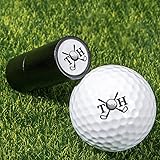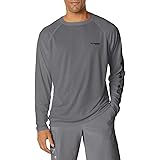Choosing the correct **beginner golf clubs** is crucial. This decision significantly impacts early golfing experiences. The video above provides an excellent starting point. It addresses the common query regarding initial golf club selection. Many options are available for new golfers.
Essential Choices for Beginner Golf Clubs
New golfers face numerous choices. The initial decision often involves complete sets versus individual clubs. Two primary recommendations are presented. A **package set** offers convenience and value. Alternatively, exploring the pre-owned section is advised. These options deliver great value for money. Expert guidance is provided by Worldwide Golf professionals. They assist in selecting a suitable set. This ensures a positive start in the game.
Package Sets: Convenience and Value
Package sets are specifically designed. They cater to novice golfers. These sets typically include a driver, a fairway wood, a hybrid, a few irons, a wedge, and a putter. This curated selection removes guesswork. Club specifications are optimized for forgiveness. This helps mitigate common mishits. Research indicates that up to 70% of beginner golfers start with a package set. Their ease of use is highly valued. Investment is also significantly lower. Beginners can expect savings of 20-40% compared to individual club purchases. This makes golf more accessible.
Navigating Pre-Owned Golf Club Options
The pre-owned market offers substantial benefits. High-quality used clubs can be acquired. These are often at a fraction of their original cost. A careful selection process is recommended. Consulting a golf expert is advisable. They can assess club condition and suitability. Many pre-owned clubs retain significant performance. A thorough inspection ensures longevity. This path allows for experimentation. Various club types can be tested without large financial commitments.
Game Improvement Irons: Forgiveness is Key
For beginners, forgiveness is paramount. **Game improvement irons** are engineered for this purpose. These clubs feature specific design elements. They help golfers achieve better results. Shots struck off-center are often salvaged. This reduces frustrating outcomes. Confidence is subsequently built. Design elements include wider soles and perimeter weighting. A lower center of gravity (CG) is also common. These characteristics reduce twisting on impact. They promote higher launch angles. This design philosophy is supported by extensive data. Forgiveness properties can reduce shot dispersion by as much as 15-20% for beginners. This significantly improves playability.
Understanding Forgiveness in Club Design
Forgiveness directly relates to Moment of Inertia (MOI). Higher MOI values are desired. They resist clubhead twisting. This stabilizes the clubface through impact. Cavity-back designs are commonly employed. Weight is redistributed to the clubhead’s perimeter. This expands the sweet spot. Shots hit slightly off-center still travel further. Spin rates are also more consistent. Many beginner irons feature offset hosels. This helps square the clubface at impact. A straighter ball flight is then promoted. These features collectively enhance a beginner’s experience.
The Importance of Custom Fitting for New Golfers
Custom fitting is often overlooked by beginners. However, its value cannot be overstated. A proper fit directly influences results. Club length, shaft flex, and lie angle are critical. These variables affect swing mechanics. They also impact shot consistency. An incorrectly fitted club can hinder progress. It may even cause discomfort. Expert fitting ensures immediate positive feedback. This accelerates the learning curve. Studies show properly fitted beginners reduce their average score by 2-5 strokes per round within the first year. This demonstrates clear benefits.
Key Fitting Parameters Explained
-
Club Length: The correct length ensures proper posture. It also affects the swing plane. Too long, and control is lost. Too short, and bending too much occurs. An optimal length promotes a natural, repeatable swing.
-
Shaft Flex: Shaft flexibility matches swing speed. Slower swing speeds require more flexible shafts (e.g., Senior or Ladies flex). Faster swings need stiffer shafts (e.g., Regular or Stiff). The correct flex transfers energy efficiently. It also optimizes ball flight and distance.
-
Lie Angle: The lie angle is the angle between the shaft and the sole. An incorrect lie angle causes the clubhead to tilt. This results in pushes or pulls. It affects shot direction significantly. Proper adjustment promotes square impact. This leads to more accurate shots.
Strategic Club Selection for Beginners (Fewer is Often More)
The Rules of Golf allow 14 clubs. However, beginners rarely need a full set. A simplified selection is often more beneficial. Focusing on a few versatile clubs builds skills. It prevents overwhelming choices on the course. The video suggests a practical starter set. This includes a driver, a high-loft fairway wood, a hybrid, a few irons, a wedge, and a putter. This core set allows practice with different shot types. It covers various distances effectively. This approach is supported by coaching principles. Learning fundamental shots with fewer clubs is prioritized.
A Curated Beginner’s Bag
Consider the following types for your initial set of **beginner golf clubs**:
-
Driver: A high-lofted driver (10.5-12 degrees) is recommended. It offers increased forgiveness. It helps get the ball airborne. Many modern drivers feature adjustable settings. These can be used to optimize launch.
-
Fairway Wood: A 5-wood or 7-wood is ideal. Their higher loft makes them easier to hit. They offer versatility from the tee or fairway. They can cover significant distance.
-
Hybrid: This club replaces long irons. Hybrids are easier to hit. They provide more forgiveness. They are excellent for shots from the rough or fairway. Their versatility is highly valued.
-
Irons: A 6-iron, 8-iron, and Pitching Wedge are sufficient. These cover short to mid-range distances. Focus on solid contact with these core irons. Game improvement characteristics are critical here.
-
Wedge: A single sand wedge (54-56 degrees) covers greenside shots. It is useful from bunkers and around the green. Mastering this club improves short game scoring.
-
Putter: A putter is essential for every round. Approximately 40% of all strokes are taken with a putter. A perimeter-weighted mallet putter offers stability. It assists with alignment. Finding a comfortable putter is key.
Beyond Clubs: Essential Golf Accessories
Getting started in golf involves more than clubs. Several accessories are necessary. A comfortable golf bag is needed. Carrying clubs is made easier. Tees are used on every tee shot. A good supply is recommended. Golf balls are frequently lost by beginners. A dozen or two should be on hand. Other useful items include a glove for grip. Golf shoes provide stability. A divot repair tool maintains the course. Ball markers are used on the green. Headcovers protect your investment. These items complete the golfing experience.
Protecting Your Investment and Enhancing Play
Selecting appropriate accessories supports your game. A lightweight stand bag is recommended for walkers. A cart bag is suitable for riders. Golf gloves enhance grip, especially in wet conditions. They prevent blisters. Quality golf balls, even distance-focused models, aid performance. Durable golf shoes provide traction and comfort. Headcovers shield clubheads from damage. They maintain club aesthetics. Investing in these items ensures a complete and enjoyable experience. Worldwide Golf has been assisting golfers for over 50 years. Their commitment includes a 90-day 100% satisfaction guarantee. Finding the right **beginner golf clubs** and accessories is made simple.










